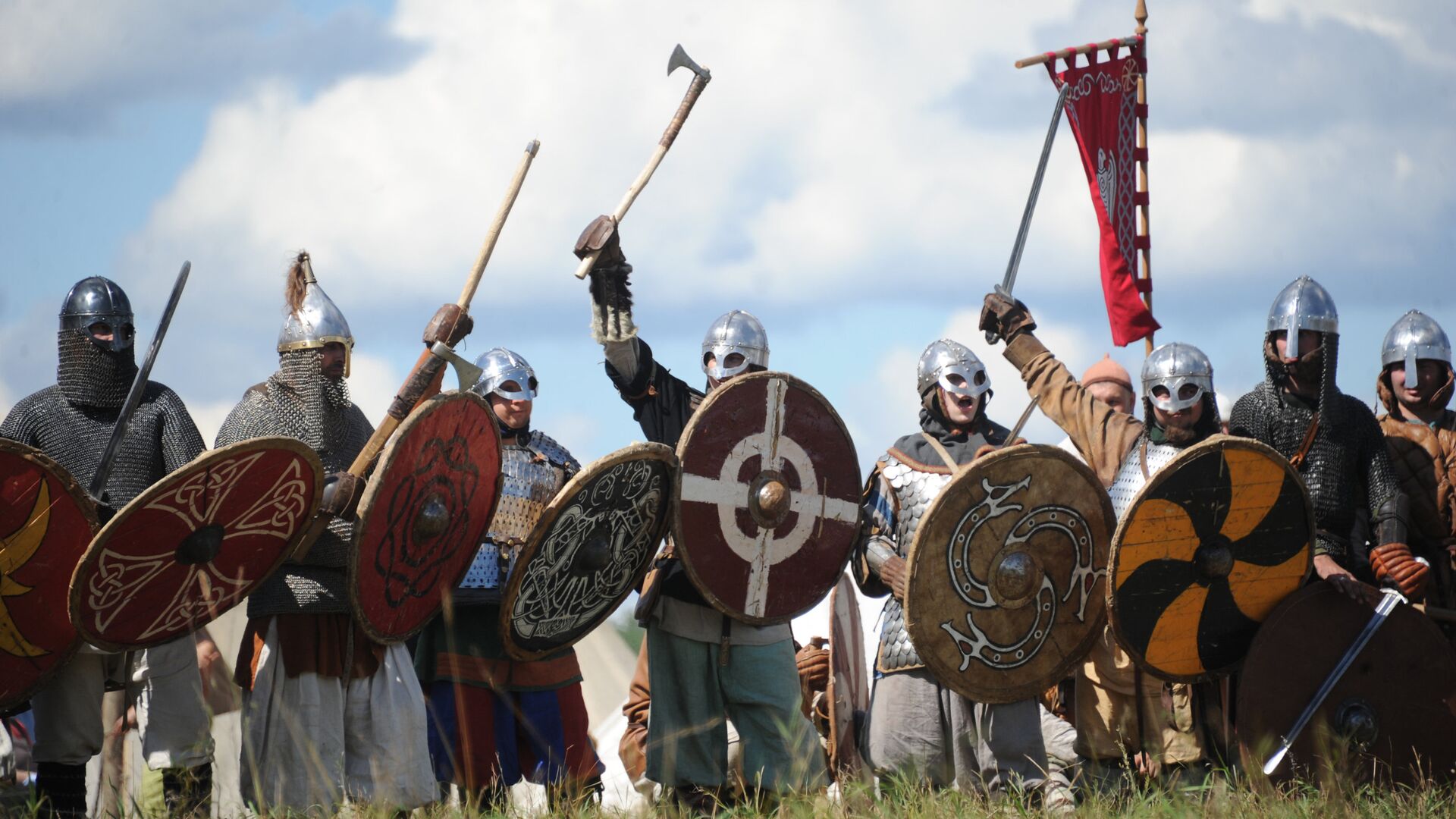https://sputnikglobe.com/20220622/my-hands-were-shaking-amateur-metal-detectorist-finds-cache-of-viking-era-silver-in-finnish-field-1096544704.html
'My Hands Were Shaking': Amateur Metal Detectorist Finds Cache of Viking-Era Silver in Finnish Field
'My Hands Were Shaking': Amateur Metal Detectorist Finds Cache of Viking-Era Silver in Finnish Field
Sputnik International
Some of the coins found outside the city of Turku are believed to have been minted in the 10th century by famous Viking king Harald Bluetooth, who ruled over... 22.06.2022, Sputnik International
2022-06-22T06:55+0000
2022-06-22T06:55+0000
2022-11-03T19:26+0000
finland
scandinavia
newsfeed
archeology
vikings
https://cdn1.img.sputnikglobe.com/img/105622/49/1056224989_0:217:3077:1948_1920x0_80_0_0_a2dcd9a98c8adc7d0e2d37ca8405948f.jpg
A group of amateur metal detectorists have found a Viking-era stash of silver coins and jewellery in a field in Mynämäki in southwest Finland, the Finnish Heritage Agency has reported in a press release.A total of about 100 silver coins and 30 notches of silver was found in a field some 30 kilometres north of Turku, the former capital of Finland.The coins and pieces of jewellery are believed to be from the tenth century. According to the press release, 12 of the coins were minted by Viking king Harald Bluetooth, the ruler of Denmark and Norway who introduced Christianity in Scandinavia. Of them, only a few had been found in Finland before.The rest of the coins spanned a period of 250 years, with the oldest one being a silver dirham from the Umayyad Caliphate dating back to the 8th century.The rest of the coins came from present-day Iraq and Central Asia, England, Volga Bulgaria, Denmark, Bohemia, Poland, Germany, Switzerland and France.The coins were found so close to each other that it was surmised that they may originally have been in a leather purse. Small pieces of Iron Age pottery were also found in the excavation area, which suggests that the site may have been well-inhabited.Mynämäki, also known by its Swedish name Virmo, is regarded for its many Iron Age sites and finds.The Viking Age (793-1050) was characterized by sea travel and expeditions to foreign territories. Norsemen known as Vikings set sail in ships and fleets to trade, obtain revenues and conquer new land in swaths of the globe stretching from the Middle East and Africa to North America.
https://sputnikglobe.com/20220617/unique-viking-age-shipyard-discovered-in-sweden-1096394432.html
finland
scandinavia
Sputnik International
feedback@sputniknews.com
+74956456601
MIA „Rosiya Segodnya“
2022
News
en_EN
Sputnik International
feedback@sputniknews.com
+74956456601
MIA „Rosiya Segodnya“
Sputnik International
feedback@sputniknews.com
+74956456601
MIA „Rosiya Segodnya“
finland, scandinavia, newsfeed, archeology, vikings
finland, scandinavia, newsfeed, archeology, vikings
'My Hands Were Shaking': Amateur Metal Detectorist Finds Cache of Viking-Era Silver in Finnish Field
06:55 GMT 22.06.2022 (Updated: 19:26 GMT 03.11.2022) Some of the coins found outside the city of Turku are believed to have been minted in the 10th century by famous Viking king Harald Bluetooth, who ruled over Denmark and Norway and introduced Christianity to Scandinavia.
A group of amateur metal detectorists have found a Viking-era stash of silver coins and jewellery in a field in Mynämäki in southwest Finland, the Finnish Heritage Agency has reported in a press release.
A total of about 100 silver coins and 30 notches of silver was found in a field some 30 kilometres north of Turku, the former capital of Finland.
The coins and pieces of jewellery are believed to be from the tenth century. According to the press release, 12 of the coins were minted by Viking king Harald Bluetooth, the ruler of Denmark and Norway who introduced Christianity in Scandinavia. Of them, only a few had been found in Finland before.
“Yes, my hands were shaking. It was my most spectacular discovery to date and the first intact cache I've found,” Oskari Heikkilä, the metal detector enthusiast who made the discovery, told national broadcaster Yle.
The rest of the coins spanned a period of 250 years, with the oldest one being a silver dirham from the Umayyad Caliphate dating back to the 8th century.
The rest of the coins came from present-day Iraq and Central Asia, England, Volga Bulgaria, Denmark, Bohemia, Poland, Germany, Switzerland and France.
“At that time there were hundreds of mints in Europe. In addition, dozens of mints operated in the Middle East and Central Asia, so in practice there are always coins from many different places in such finds. The coins circulated freely, so it did not matter as much as today where the coin was minted. The most important thing was that they were made of silver,” National Museum curator Jani Oravisjärvi told Yle.
The coins were found so close to each other that it was surmised that they may originally have been in a leather purse. Small pieces of Iron Age pottery were also found in the excavation area, which suggests that the site may have been well-inhabited.
Mynämäki, also known by its Swedish name Virmo, is regarded for its many Iron Age sites and finds.
The Viking Age (793-1050) was characterized by sea travel and expeditions to foreign territories. Norsemen known as Vikings set sail in ships and fleets to trade, obtain revenues and conquer new land in swaths of the globe stretching from the Middle East and Africa to North America.




